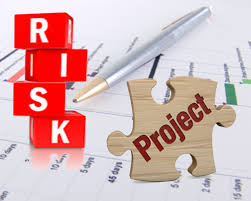Governance is one of the driest topics in project management, but it is also one of the most critical. It’s how senior management knows their teams are doing a good job, and it reassures them that the project is progressing as planned. It also provides the required checks and balances for management to ensure that money is spent appropriately and in accordance with the business case. Finally, it is the project sponsor’s obligation to guarantee sufficient governance, but project management can also play a part in this. Whatever your function, understanding project governance and how it helps teams achieve their goals is beneficial. This post will discuss how to manage the project governance structure, model, and framework.
What Is Project Governance?
Project governance ensures that projects run smoothly and on time, with customer satisfaction. To achieve this consistently, an overall governance framework that oversees the project is required. This is project management. But what exactly does it entail?
What Does Project Governance Include?
The word “project governance” refers to the set of actions and principles that establish how to manage, plan, and execute a project. You might think of project governance as a framework to assist you to steer the project in the proper direction. By using project governance as a framework, you create consistency, which adds to the project’s stability.
However, governance extends beyond a particular project’s decision-making. It specifies an organization’s activities and who is responsible for what. That’s a sizable chunk of the pie, and it comprises policies, regulations, functions, processes, procedures, and duties.
It is obvious that project governance is a large task that requires project management software to manage all of its obligations. Project Manager is work and project management software with roadmaps to assist you in tracking a portfolio of projects. Unlimited storage, collaboration, and file-sharing are also inclusive. When you monitor schedules, finances, and resources in real-time, you can make better-informed decisions. Begin for free right now.
Pillars of Project Governance
Project governance encompasses three concepts:
#1. Structure
The structure and environment of the organization must support the project. This signifies that top management is willing to devote time and effort to developing a vision for project managers to follow. The “structure” portion of governance refers to the entire organization, not simply the current team.
#2. People
Investing in effective project managers is critical to the success of any project. However, senior management must first comprehend their existing actions. Governance can then outline the targets that each PM should strive for. These objectives must be specific, attainable, and long-term.
#3. Information
While it is critical to understand people, the process is much more critical. Regardless of how many goals are stated or what the vision is, without clear and consistent information sharing, any project will suffer.
Roles in Project Governance
The active functions within the governance structure are determined by the project management approach used. Typically, you will encounter all or more of the following roles:
#1. Project Owner
This person is in the spotlight because they represent the company. As a result, they are usually not the project manager because they hold the project manager accountable.
#2. Key stakeholders
A Project Board is composed of essential stakeholders. They are either project funders, end product customers, or suppliers. To make the process efficient, keep the number of essential stakeholders to a maximum of six.
#3. Advisory Committee
When there are several stakeholders, having a broader advisory committee keeps them involved in the project without making decision-making difficult or inefficient. This is more of a discussion board than a project board.
Separate the project board from “business as usual.” This keeps the project responsive, allowing it to continue without requiring approval from higher up on every project decision. The Project Owner can make day-to-day decisions without the permission of everyone else.
Read Also: Project Planning: A Guide To Project Planning Techniques
Project Governance Structure
We might even claim that having a governance structure is important to the success of a project since it provides clear rules on how to behave in different situations and removes a lot of chaos from the equation.
What Factors Influence Project Governance Structure?
Any project’s governance structure should be built on a few key concepts that are entirely applicable throughout the entire process, independent of the project phase:
- Logic – the defined framework must be reasonable and understandable to all parties concerned.
- Adequacy – there is no one-size-fits-all governance structure; this should always be tailored to the business or project at hand.
- Transparency—all information about the governance structure must be communicated openly, intelligible, and accessible to all team members.
- Replicability – the techniques and procedures used should be comprehensive enough to be used again in any given situation.
- Efficiency – the governance structure should allow any project to run as smoothly and productively as feasible.
If a project lacks a governance structure, it is simple to become trapped and lose sight of its goals.
Project Governance Model
The project governance model must work in tandem with the organization. A project governance model is the result of the coordinated interaction of three components:
#1. Structures of decision-making
Organizations often use charts to define decision-making structures. The hierarchical flow of control is plainly visible in many three-tier governance frameworks. Pre-defined roles and responsibility matrices help governance charts by providing more clarity and allowing precise decisions about who can make what decisions in the organization.
#2. Operational procedures
Procedures define a project’s expectations in order to achieve collective results. Although processes must be tailored to every project, several are important for project success.
#3. Collaboration facilitators
The collaboration enabler provides a way for project stakeholders to communicate their views and information. Organizations can benefit from a solution that allows team members to log decision data as the project progresses, rather than relying on collective memory.
How to Implement a Project Governance Model
To construct and use the project governance model, follow these steps:
#1. Determine the stakeholders
High-level executives, staff, and third-party people involved in the project might all be considered stakeholders. Once you’ve identified them, emphasize the significance of governance in easing the transition.
#2. Determine the importance of your company’s objectives.
The steering committee ranks business objectives and initiatives. Committee members might create goals in areas where they have expertise. They then work together to determine which ones to prioritize.
#3. Establish the proper procedures
Create protocols to streamline communication and determine how to obtain approval. Create norms and standards that allow all parties to collaborate toward a common goal.
#4. Appoint committee members
Select staff from several divisions and assign them a specific role to execute the project. You can form your committee by selecting individuals who have demonstrated their ability to provide, review, and regulate the strategic direction of a project as well as provide policy counsel to stakeholders and the project team. These members will make project recommendations and discuss broad project planning and implementation techniques. Members of the steering committee are often senior managers and high-level project client representatives.
#5. Communicate effectively
Educate all project participants on the project’s committees and processes. Providing education to project members demonstrates that management is invested in the project and aids in the engagement of all staff members.
What Is Project Governance in Project Management
In management, project governance is the architecture that deals with the responsibility and accountability that surrounds your project. It serves as the framework for making project-related choices. Governance in project management provides a solution to the question: to whom will I report? And who is required to report to me? It provides a structure for project management. The sponsor, who acts as a link between the board, the project manager, and the stakeholders, plays an important role in project governance.
Project Governance Framework
There is no one-size-fits-all governance structure that all businesses can utilize. There are, however, important components of excellent governance that all businesses should consider when developing their governance framework.
Elements of a Project Governance Framework
What constitutes good governance? Are there any obvious indicators that indicate the features of a project governance framework?
Take a look, and you might be able to identify certain acts and characteristics that indicate a project’s proper governance.
- A solid project management life cycle is present in any project that emphasizes excellent governance. It takes into account all explicitly established criteria of approval.
- The points discuss whether or not the project is viable. Whatever the case may be, a decision on the project’s continuation is made at this point.
What Does Project Governance Entail and Why Is It Crucial?
By providing efficient escalation channels for concerns and modification requests and outlining delegated limits of authority, governance equips project personnel to carry out their duties. The duties and responsibilities of the team and other stakeholders must also be clearly defined in order to practice good governance.
What Is a Structure for Project Governance?
The governance structure is the framework for project management, particularly in terms of the rules, practices, roles, and responsibility allocation across the entire decision-making process. It maintains the project under control, enabling it to proceed perfectly and according to schedule.
Who Is in Charge of Project Governance?
The project sponsor plays a crucial part in project governance. The board, the project manager, and the project stakeholders are the project sponsor’s three key points of accountability.
Conclusion
All of these are aspects of project management that must be understood from the start. Don’t only focus on the definitions. If you want to get more out of this, look beyond. When you make this a habit, the greater picture becomes more visible. What eventually happens is that you make more informed decisions while minimizing errors.
Project Governance FAQs
What is project governance example?
Example:
Because he or she develops the overall strategy and game plan, the head coach serves as the project manager. The general manager of the team is a project executive, someone who demonstrates great leadership, decision-making, and communication abilities to ensure the project runs well.
How do you develop project governance?
Start by establishing the fundamentals:
- Make a “roles and duties” list.
- Ascertain that you have a project sponsor.
- Make a project board or steering group, and schedule regular meetings at which you will take and share minutes.
- Create a risk management procedure.
- Create a change management procedure.
What is the difference between project management and project governance?
While governance entails overseeing a project as a whole throughout the project life cycle, management entails managing the specific components of a project on a daily basis. A collaborative approach to project governance and management is critical to project success.






